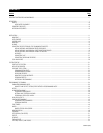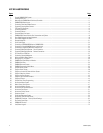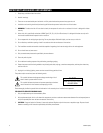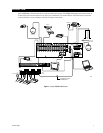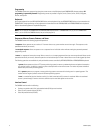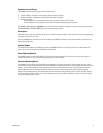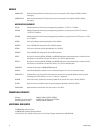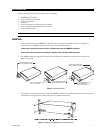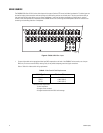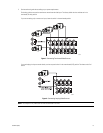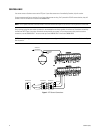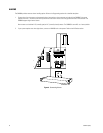C1522M-C (2/05) 9
System Access and Priority
The CM6800 provides the following ways to restrict system access:
• Camera to Monitor: Cameras can be assigned to specific monitors for viewing.
• Keyboard to Monitor: Keyboards can be assigned to control specific monitors.
• Camera to Keyboard:
-Viewing: Keyboards can be assigned view-only access to specific cameras (no PTZ control).
- Control: Keyboards can be assigned full access (both PTZ control and viewing) to specific cameras.
The CM6800 provides eight levels of priority control. Each level defines the ability of a keyboard to control a camera positioning system
(KBD200A/KBD300A or KBD960/KBR960 only) and to access programming screens.
Alarm Inputs
Eight internal alarm inputs are provided on the rear panel of the matrix switcher/controller. These internal alarm inputs are programmable
to associate any camera to any input.
Up to two ALM2064 Alarm Interface Units can be connected to the CM6800. Each alarm interface unit can handle up to 64 alarms, for a
total of 128 external alarms.
Auxiliary Outputs
Two internal auxiliary outputs are provided on the back of the CM6800-32X6. One is a relay output, and one is an open collector (TTL)
output. You can also connect up to two REL2064 Relay Interface Units.
Power, Mounting Methods
The CM6800 operates on 120V or 230V, 50/60 Hz. The case mounts in three rack units (5.25 inches or 13.34 cm) of vertical space in a
universal mount, such as a 19-inch (48.26 cm) equipment bay, or to a wall or tabletop.
Continuous Operating Device
The CM6800 is a self-contained video surveillance system designed for continuous duty operation. Once installed, there are no user or
service technician items that require intervention which would require the system to go off-line or have the power turned off under normal
operation. There are two methods for system programming: direct menu control and indirect control, using a Windows
®
-based setup
program supplied by Pelco. Both of these methods are noninvasive and do not require the cycling of power in order for storage or
execution of new software settings. The communication ports use standard low voltage interfaces such as RS-232, RS-422 and RS-485,
and all connections and disconnections do not require rebooting or power cycling. Video connections or changes of termination state do
not require rebooting or power cycling.




